Introduction
The Maryland Department of Transportation State Highway Administration’s (MDOT SHA) Pollinator Habitat Plan was developed in response to the 2016 Pollinator Protection Act of the Maryland General Assembly, § 2-1801 Pollinator Habitat Plan, the 2017 amendments, and 2024 Legislative Session amendments through House Bill 22 and Senate Bill 178 detailing the requirements for a Pollinator Protection Plan in conjunction with the Maryland Department of Agriculture’s Pollinator Protection Plan.
Importance of Pollinators
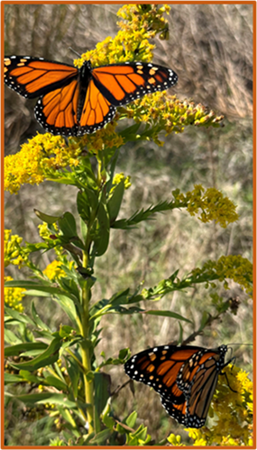
Pollinators – including wild pollinators such as bees, wasps, flies, beetles, butterflies, moths and hummingbirds – are essential to our well-being and play an important part in healthy ecosystems. Maryland alone supports over 400 species of native bees, the most important group of pollinators in the state according to the Maryland Department of Natural Resources (Bees - Maryland's Wild Acres).
An estimated 85% of the world’s flowering plants depend on animals for pollination and successful fruit development, including many crops that produce our fruits, vegetables, nuts, seeds, and livestock forage (The Value of Birds and Bees | Farmers.gov).
Both wild and managed pollinators have been declining in population due to a loss of habitat, climate change, environmental contamination, the spread of disease and other factors, making it vitally important to implement strategies that promote the success of these species for future food security, plant and animal success and diversity.
Pollinators and plants have developed a mutualistic relationship for millions of years. The pollinator receives food from the plant in the form of nectar and pollen, while the plant relies on the insect or bird to disperse pollen to other flowers for fertilization, which is required for seed development and the continuation of the plant species. Flower shapes, sizes, colors, fragrance and arrangement have all been refined over eons to appeal to a certain pollinator efficiently and effectively.
This specialized, mutualistic relationship is why pollinator populations decline when their habitat and food sources are reduced. The plant and pollinator relationship is not exclusively for pollen, nectar and seed development. Many insects rely on a single species of plants to host and feed their young. The Monarch butterfly has co-evolved with milkweed species (Asclepias) so that it will only lay its eggs on milkweed plants. When the Monarch’s young larvae, or caterpillars, eat the milkweed leaves, they ingest toxins from the leaves that make them poisonous to birds and other predators. In fact, this toxicity remains in the Monarchs even after they pupate into butterflies and protects the butterflies from predators.
Benefits of Pollinator Habitat Sites
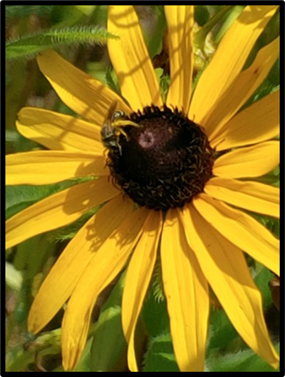
Creating and preserving pollinator habitat is critical for protecting and restoring pollinator populations, which are vital for securing our future food supply, ensuring the continuation of diverse plant species and contributing to the success of the entire ecosystem. Specifically, development of pollinator habitat sites, in addition to providing habitat for important pollinator species, provides the following benefits:
- Establishment of native plant communities.
- Stormwater management and erosion reduction.
- Greater potential for carbon sequestration.
- Promotion of healthier soil and ecosystems.
- Creation of aesthetically pleasing roadside landscapes.
Goals
MDOT SHA manages over 50,000 acres of roadside areas outside of the paved surfaces, including forests, meadows, wetlands and waterways. All site types provide environmental benefits, habitat, food source and connectivity for pollinators and other wildlife. MDOT SHA strives to maintain a balance of these environment types to promote environmental stewardship and ecosystem vibrancy, and meet programmatic and regulatory goals.
The goals of the MDOT SHA Pollinator Habitat Plan are to create, enhance, restore and manage habitats that support bees, butterflies and other threatened and impacted pollinators by:
- Prioritizing the use of native plants in our mitigation and planting designs for highway development projects.
- Establishing perennial wildflowers and meadow grasses that provide persistent and stable food sources, nesting locations and overwintering sites for pollinators.
- Installing educational and informational signage about pollinators and their habitat for public understanding.
- Utilizing social media and other media outlets to promote pollinator habitat awareness and management best practices.
- Providing a network of pollinator habitats to connect Maryland’s green spaces.
- Tracking, evaluating and applying for funding that supports pollinator habitats, native plants and invasive species control.
Implementation Strategy
MDOT SHA has adopted several implementation strategies to enhance pollinator habitat, food, shelter and mobility networks to support the various life stages of these important species. Strategies include both current practices and plans to ensure the preservation and success of Maryland’s pollinator species.
Construction of Demonstration Gardens
- Serve as a resource for the public on the importance of pollinators to plants and people, and to build their own pollinator gardens.
- Construct small, example habitats to educate and demonstrate how these environments can be designed for various scales across the state.
- Manage as a landscape garden with interpretive signage.
In 2019 MDOT SHA installed five demonstration gardens at Welcome Centers:
- Mason Dixon Welcome Center on US 15 in Frederick County
- South Mountain Welcome Centers on I-70 (eastbound and westbound) in Frederick County
- I-95 Welcome Centers (southbound and northbound) in Howard County
In 2024 MDOT SHA constructed demonstration gardens at five MDOT SHA office locations:
- MDOT SHA District 3 Office in Greenbelt
- MDOT SHA District 4 Office in Hunt Valley
- MDOT SHA District 5 Office in Annapolis
- MDOT SHA District 7 Office in Frederick
- MDOT SHA Hanover Complex

Establishment and Management of Roadside Pollinator Meadows
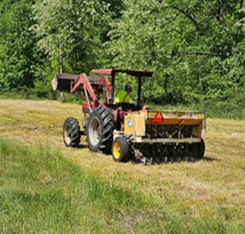
While MDOT SHA continues a mowing schedule for its right-of-way clear zones, the agency does allow some areas outside the clear zones to grow. Mowing less frequently in these specific areas encourages native meadow species to emerge, supporting pollinator habitat and food sources like milkweed. It’s important to note that MDOT SHA actively mows the clear zones immediately adjacent to the roadway to preserve a safe and reliable roadway system by maintaining safety offsets, vehicle recovery clear zones and sightline clearances.
MDOT SHA constructed three new pollinator meadow habitats totaling approximately seven acres along the right of way in the spring of 2024 in Anne Arundel, Howard and Queen Anne’s Counties.
These sites are located outside of clear zones are mowed once per year during the dormant season (November-March) and selectively treated for invasive species. These areas:
- Include early, mid and late season flowering plants that provide nectar to pollinators before, during and after migration.
- Incorporate grasses to provide nesting locations and overwintering sites.
- Reduce mowing to allow seeds to set and disperse to preserve the next generation of perennial flowers and grasses, further expanding and enhancing pollinator habitat.
Meadow Establishment Locations Site Search and Existing Meadow Site inventory
The MDOT SHA right of way provides an opportunity to create networks of pollinator habitats throughout the State. This process begins with mapping existing meadows and identifying gaps in habitat continuity; it aids the creation of connected habitats across the State.
MDOT SHA is investigating and tracking statewide pollinator habitat site development opportunities within the right of way. Sites of interest include areas that can be established as demonstration gardens and pollinator meadows for future pollinator habitat projects.
Education, Outreach and Communications
Other outreach includes publishing multiple social media posts on several platforms to build excitement and interest around National Pollinator Week and providing interviews to various news outlets about the program and how to create, enhance, restore and manage pollinator habitat areas.
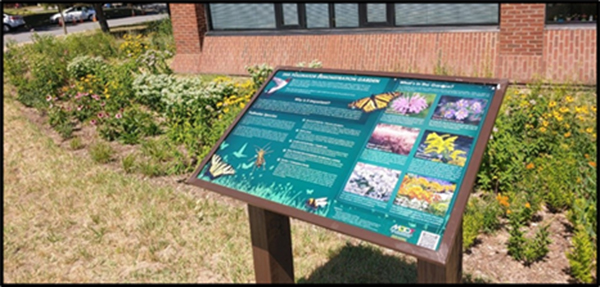
Funding Opportunities
SHA tracks, evaluates and applies for additional funding for pollinator habitats, native plants, invasive species control and other opportunities that benefit pollinators and their habitat.
In December 2024, SHA was awarded a grant through the U.S. Department of Transportation Pollinator-Friendly Practices on Roadsides and Highway Rights-of-Way Program. This funding will support projects to install approximately eight acres of additional pollinator habitat in SHA roadside and medians across the State. It will also support further development of the SHA Pollinator Habitat Plan. Outreach in the form of additional roadside signs, training and community engagement at select demonstration gardens will also be included.
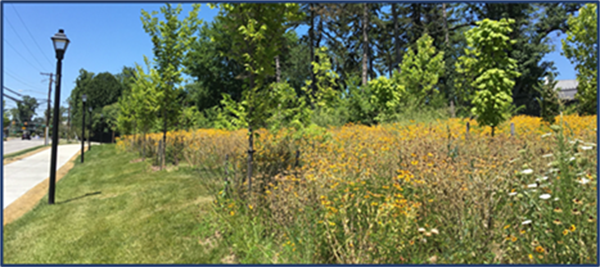
Additional Resources
Pollinator Garden Design and Plant Species Selection Resources(University of Maryland Extension)
Press Releases
News coverage
Social Media, Instagram
Video